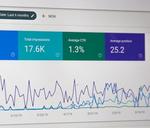Find Your Perfect Hard Disk
Expert reviews, comparisons, and buying guides
The Best Hard disk models of 2025
Top 3 models determined by our expert tests
Samsung 980 PRO NVMe SSD
$129WD Black 4TB HDD
$189SanDisk Portable SSD
$89Detailed Model Comparison
Compare all important features side-by-side - Table is scrollable to the right
| Features |  Samsung 980 PRO NVMe SSD |  WD Black 4TB HDD |  SanDisk Portable SSD |
|---|---|---|---|
Capacity | 1TB | 4TB | 500GB |
Type | NVMe SSD | HDD | External SSD |
Speed | 7,000 MB/s | 7200 RPM | 1050 MB/s |
Interface | Internal | Internal | External |
Form Factor | Internal | Internal | Portable |
Dimensions | M.2 2280 | 3.5 inch | Compact |
Price | $129 | $189 | $89 |
Rating | 4.8/5 | 4.5/5 | 4.6/5 |
Best For | GamingProfessional | StorageBackup | PortableTravel |
* Prices may vary. Visit product pages for current prices.
Professional Storage Guides
Professional data management, storage optimization, and maintenance guides
Professional Data Backup Strategies
Comprehensive guide to data backup and recovery strategies
Storage Optimization Guide
Professional techniques for optimizing storage performance
Hard Drive Maintenance Best Practices
Essential maintenance practices to extend drive lifespan
Frequently Asked Questions
Get answers to common questions about storage devices and data management
SSDs (Solid State Drives) use flash memory and have no moving parts, offering faster speeds, lower power consumption, and better durability. HDDs (Hard Disk Drives) use spinning disks and are generally cheaper per GB but slower and more susceptible to physical damage.
It depends on your usage. For basic computing: 256GB-512GB SSD. For gaming: 1TB+ SSD. For content creation: 2TB+ with combination of SSD for OS and HDD for storage. For enterprise: Multiple TBs depending on data requirements.
NVMe SSDs offer significantly faster data transfer speeds (up to 7,000+ MB/s) compared to SATA SSDs (around 550 MB/s). They provide better performance for gaming, video editing, and professional applications requiring high-speed data access.
Internal storage offers better performance and is ideal for your primary OS and frequently used applications. External storage is perfect for backups, additional storage, and portability between devices.
Follow the 3-2-1 backup rule: 3 copies of important data, on 2 different storage media, with 1 copy stored offsite. For critical data, daily backups are recommended. For personal use, weekly backups are usually sufficient.
SSDs have limited write cycles but typically last 5-10 years with normal use. HDDs can last 3-5 years but are more susceptible to physical damage. Factors include usage intensity, temperature, power cycles, and manufacturing quality.
While not mandatory, a fast SSD (preferably NVMe) significantly reduces game loading times and improves overall gaming experience. Many gamers use a combination: fast SSD for OS and current games, larger HDD for game library storage.
Storage prices vary widely. Budget SSDs start around $50-80 for 500GB, while high-end NVMe drives can cost $200+ for 1TB. Consider your performance needs, capacity requirements, and budget. Investing in quality storage pays off in reliability and performance.